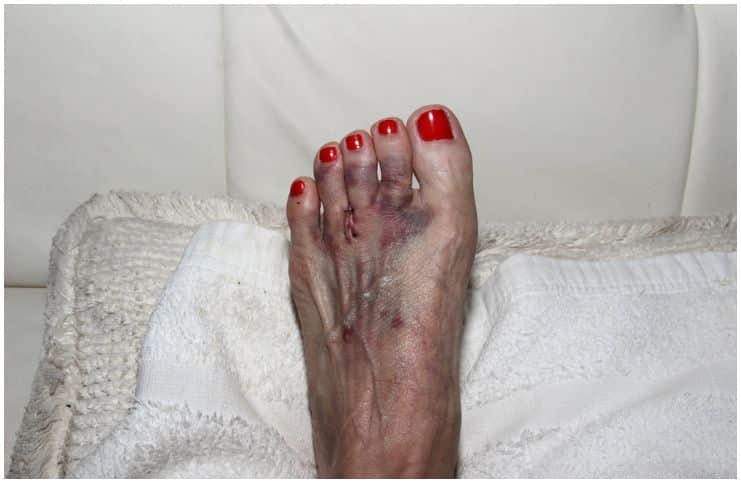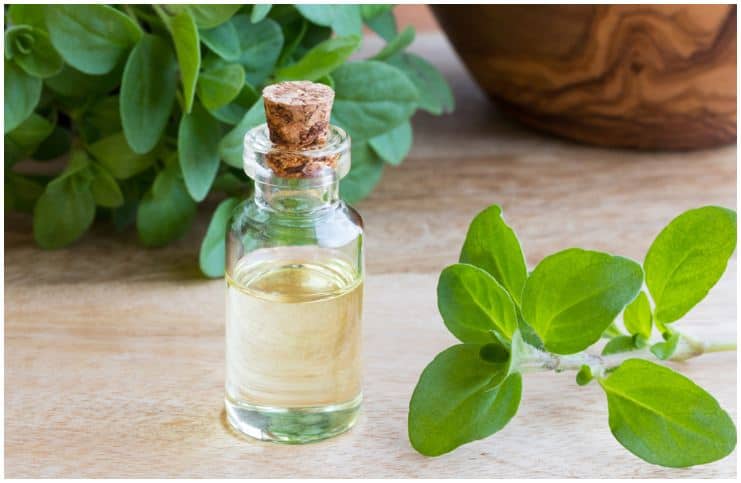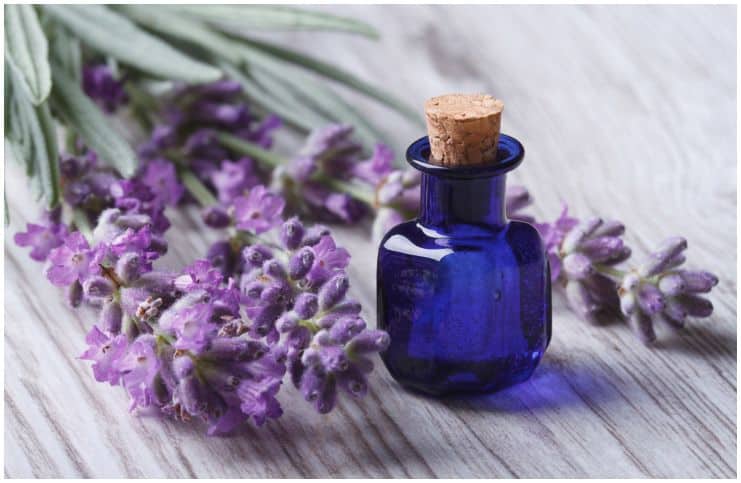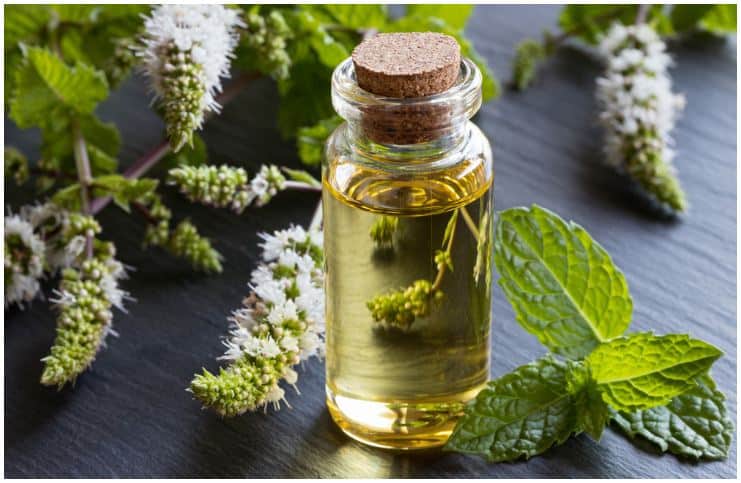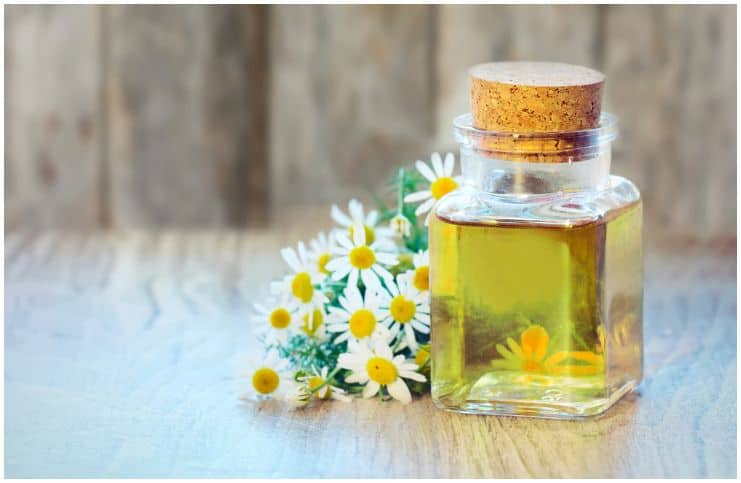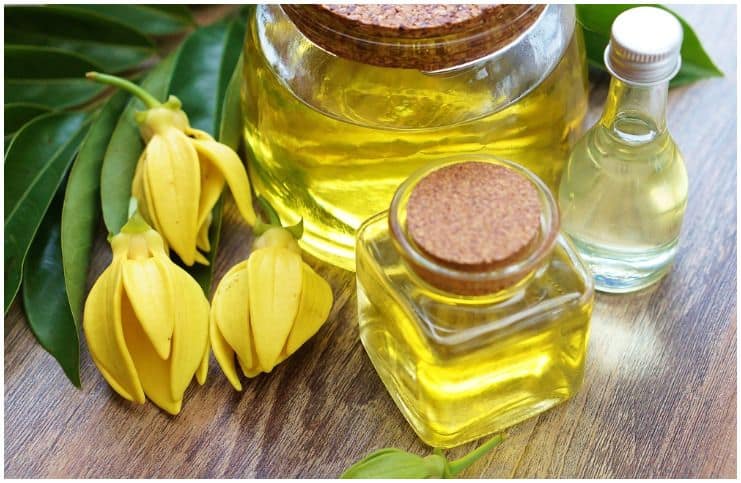Essential Oils For Morton’s Neuroma + Home Remedies:
A Morton’s neuroma (MN), also referred to as interdigital neuroma or Morton’s metatarsalgia, is thickening, inflammation, or enlargement of the nerve between the bones of the toes.
It can occur at any age; however, it most frequently affects middle-aged women.
MN most often occurs between the 3rd and 4th toes, typically in response to trauma, irritation, or excessive pressure. Also, it can occur in 1 foot or both feet.
MN was 1st described by Lewis Durlacher, Queen Victoria’s surgeon chiropodist, as a form of neuralgic affection that involved the distal plantar nerves.
Symptoms
Common symptoms include:
- a feeling like there is a marble or pebble under the ball of the foot;
- a feeling like there is a “bunched-up sock” under the ball of the foot;
- numbness;
- tingling;
- swelling between the toes;
- pain in the forefoot between the toes;
- a stinging or sharp pain between the toes when walking or standing.
Complications
Individuals with MN may have trouble with any activities that put pressure on the foot, such as – pressing the gas pedal while driving a car.
Also, this foot condition can restrict weight-bearing physical activities like playing golf, running, skiing, playing tennis, football, and soccer as well as it can make walking difficult.
Causes
The condition is due to a swollen nerve in the ball of the foot, usually between the base of the 3rd and 4th toes.
MN is usually caused by shoes that are too tight, or that have high heels.
Other causes are:
- excessive dorsiflexion of the toes;
- high arch foot (Cavo varus);
- too much motion (hypermobility);
- overpronation (when the arches of the foot roll downward or inward when walking).
Risk Factors
Factors that appear to contribute to this foot condition include:
- foot deformities – individuals who have hammertoes (a contracture deformity of one or both joints of the 2nd,3rd, 4th or 5th toes), bunions (they form when the tissue or bone at the joint at the bottom of the big toe moves out of place), flat feet, or high arches;
- certain sports – sports that feature tight shoes, like – rock climbing or snow skiing, can put extra pressure on the toes. Also, participating in high-impact athletic activities like – running or jogging may subject the feet to repetitive trauma;
- wearing high-heeled shoes – they can place pressure on the ball of the foot and the toes.
Diagnosis
Your podiatrist will perform a physical exam and will ask questions regarding your symptoms.
Additionally, scans may be ordered in order to get a detailed image of the inside of the foot. These scans include:
- MRI (magnetic resonance imaging) – it is a non-invasive imaging technology that can detect the foot condition, even when there are no signs or symptoms;
- ultrasound scans – it is a painless test that uses sound waves to create images of your foot and can identify MN with similar accuracy to magnetic resonance imaging;
- X-rays – they are a form of electromagnetic radiation.
Treatment
Treatments include:
- applying ice to sore areas to help reduce swelling;
- injection therapy – it may include injections of local anesthetics or cortisone (a type of medication that suppresses inflammation);
- physical therapy;
- nonsteroidal anti-inflammatory drugs or painkillers, like – aspirin or ibuprofen (Motrin, Advil) may be prescribed to reduce inflammation and pain;
- resting your foot and especially avoiding activities that put repetitive pressure on your foot until the condition improves;
- the use of footpads or arch supports for your shoes;
- exercises to strengthen your toes and ankles;
- massaging the ball of the foot;
- stretching exercises to loosen ligaments and tendons.
Surgery
Surgery is sometimes needed when the conservative treatment is not able to relieve the symptoms, especially if you have had pain for more than 180 days.
Surgery is typically effective. However, it can lead to permanent numbness in the affected toes.
10 Essential Oils For Morton’s Neuroma
#1 Marjoram
This essential oil is produced from the marjoram (Origanum marjorana), a type of herb that is usually found in Egypt, Hungary, France, Spain, Portugal, and Germany.
The oil acts as an arterial vasodilator, a natural pain reliever, a stimulant, and a tonic for the nervous system.
Note – it blends well with Cypress, Lavender, Bergamot, and Wild Orange essential oils.
#2 Lavender
It is produced through steam distillation from the flowers of the lavender herb.
Lavender essential oil helps reduce the damaging effects of stress on the body and is an anti-inflammatory, pain-relieving, and antidepressant agent.
#3 Rosemary
It has been used for centuries as an essential oil and a healing herb in numerous different ancient cultures and medical systems.
For Morton’s Neuroma, apply rosemary essential oil topically to reduce pain and aches.
Note – breathing rosemary essential oil may help you remember information and focus.
#4 Basil
It is an amazing antibacterial, antispasmodic, and antiviral essential oil that is utilized in nerve pain relief.
Also, its anti-inflammatory attributes make it an effective natural remedy for small wounds, irritations, pains, and sores.
#5 Balsam Fir
It is an essential oil that has potent analgesic effects on nerve pain due to its intense warming sensation.
Some of the compounds in balsam fir include:
- Beta-bisabolene;
- Delta-3-carene;
- Beta-caryophyllene;
- Beta-pinene;
- Longifolene;
- Alpha-pinene;
- Terpinene;
- Limonene;
- Tricyclene;
- Terpinolene;
- Camphene.
When inhaled with steam through a diffuser, balsam fir essential oil has anti-inflammatory effects.
#6 Peppermint
It has antibacterial, anti-inflammatory, insecticidal, antiviral, carminative, and antispasmodic properties.
Peppermint oil helps relieve pain, relaxes muscles, increases circulation, and provides nervous system support.
#7 German Chamomile
German Chamomile (botanical name – Matricaria recutita) is distilled from the dried flowers of the plant.
It has anti-inflammatory properties as well as it is effective at restoring balance and calmness.
#8 Ylang-Ylang
It has healing properties that repair nerve damage.
Tip – this essential oil has been used in natural medicine to treat malaria.
#9 Helichrysum
Helichrysum has – antiviral, antimicrobial, anti-fungal, antibiotic, antispasmodic, antioxidant, anticoagulant (blood-thinning), anticatarrhal (mucus removal), and antibacterial properties.
The oil helps to relieve nerve pain while healing and regenerating damaged nerves.
#10 Eucalyptus
With its antispasmodic, analgesic, and anti-inflammatory attributes, eucalyptus oil is a popular choice for treating nerve pain.
Other home remedies include:
- magnesium oil;
- cannabidiol (CBD) oil;
- castor oil.
Prevention
Prevention methods include:
- stretch regularly;
- wear shoes that are designed with a roomy toe box;
- fit your shoes with the socks that you plan to wear during physical exercise;
- use sport-specific shoes;
- wear shoes that have good forefoot cushioning.
READ THIS NEXT:
10 Essential Oils For Swimmer’s Itch
5 Essential Oils For Corns And Calluses
5 Essential Oils For Raynaud’s
References https://onlinelibrary.wiley.com/doi/full/10.7863/ultra.15.11022 https://www.ncbi.nlm.nih.gov/pmc/articles/PMC3691490/ https://www.sciencedirect.com/science/article/pii/S0958259296900371
